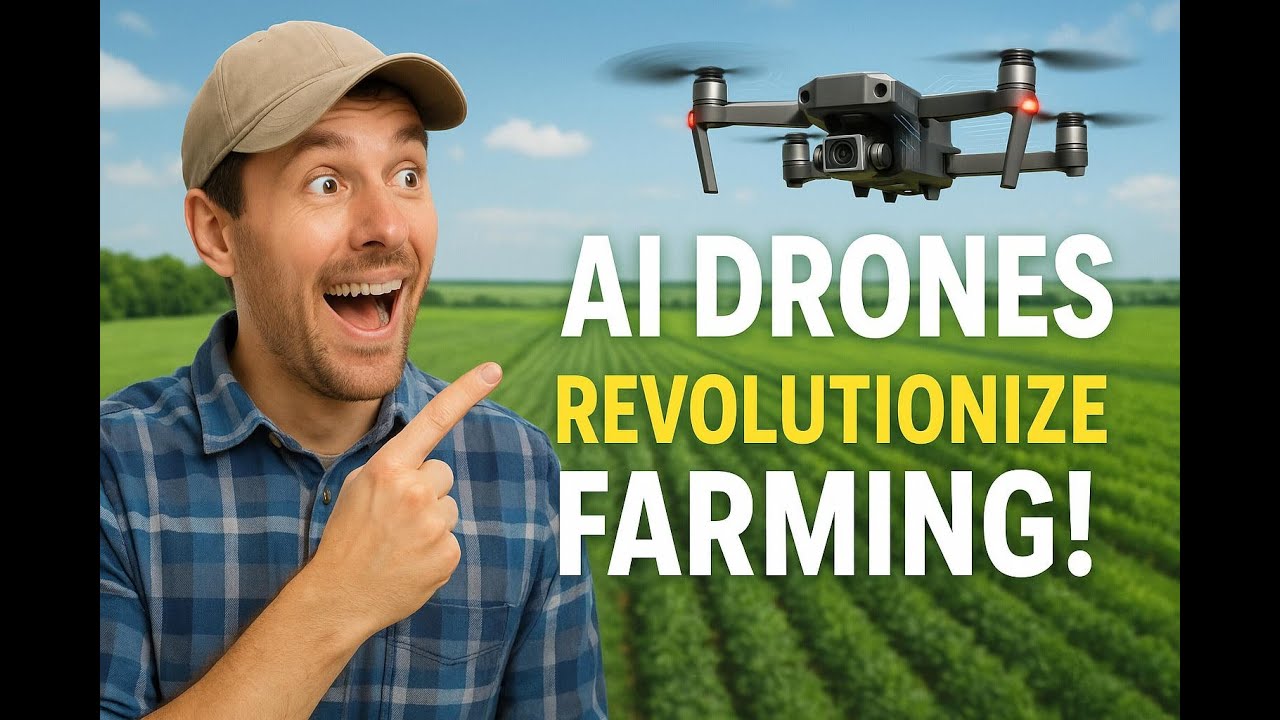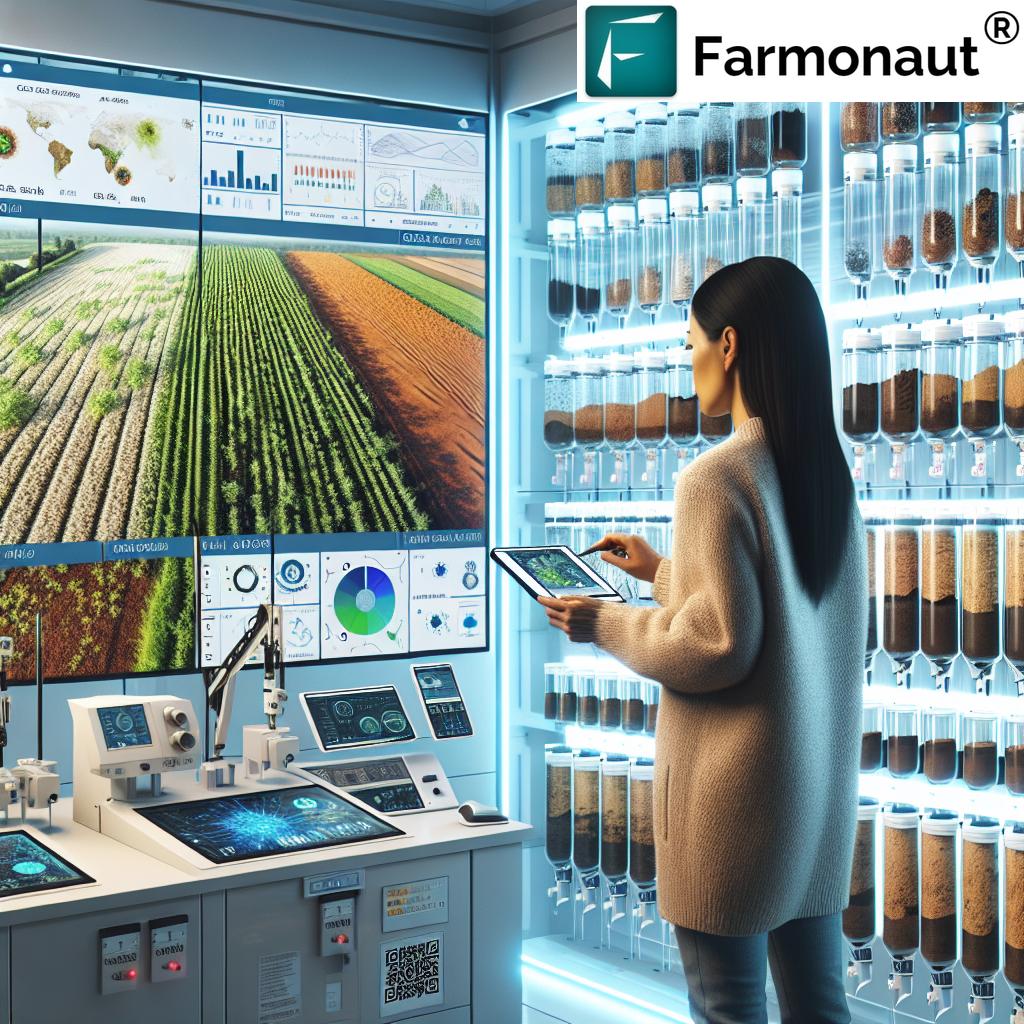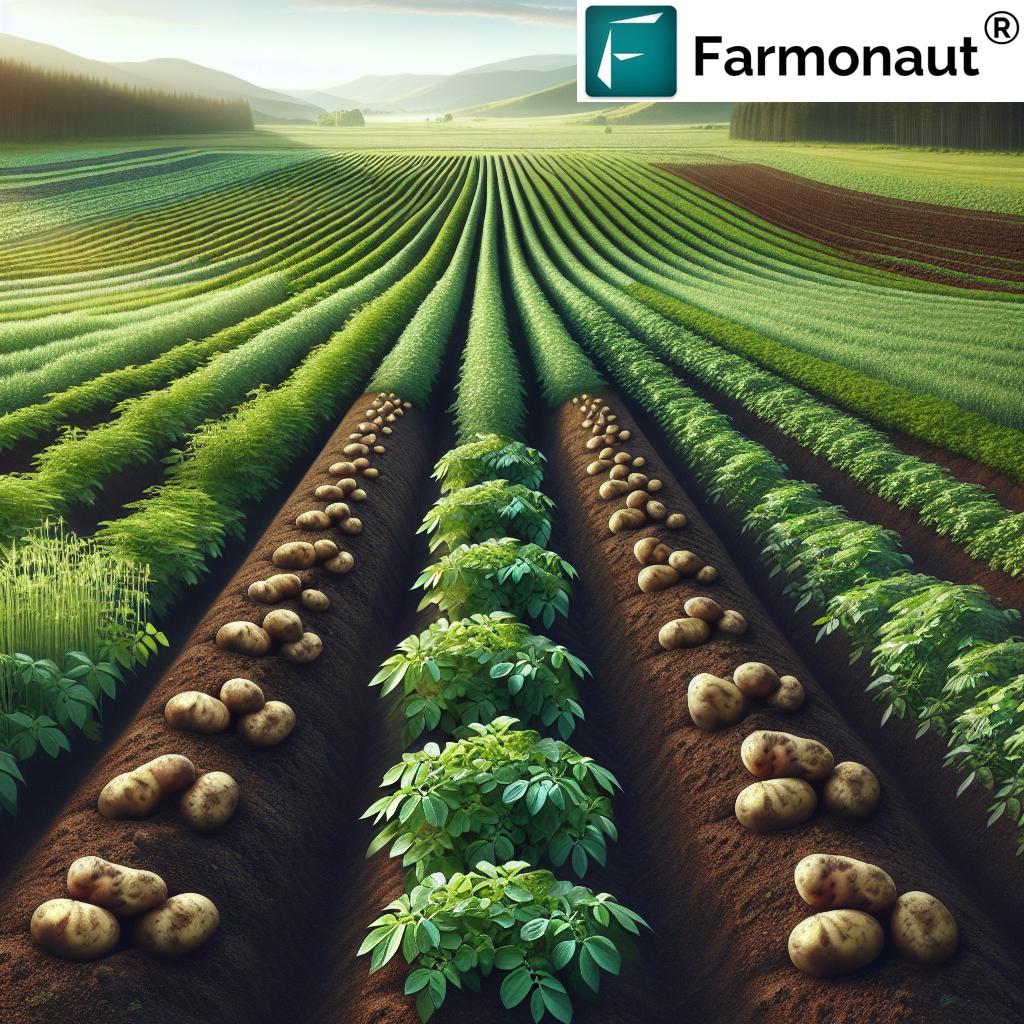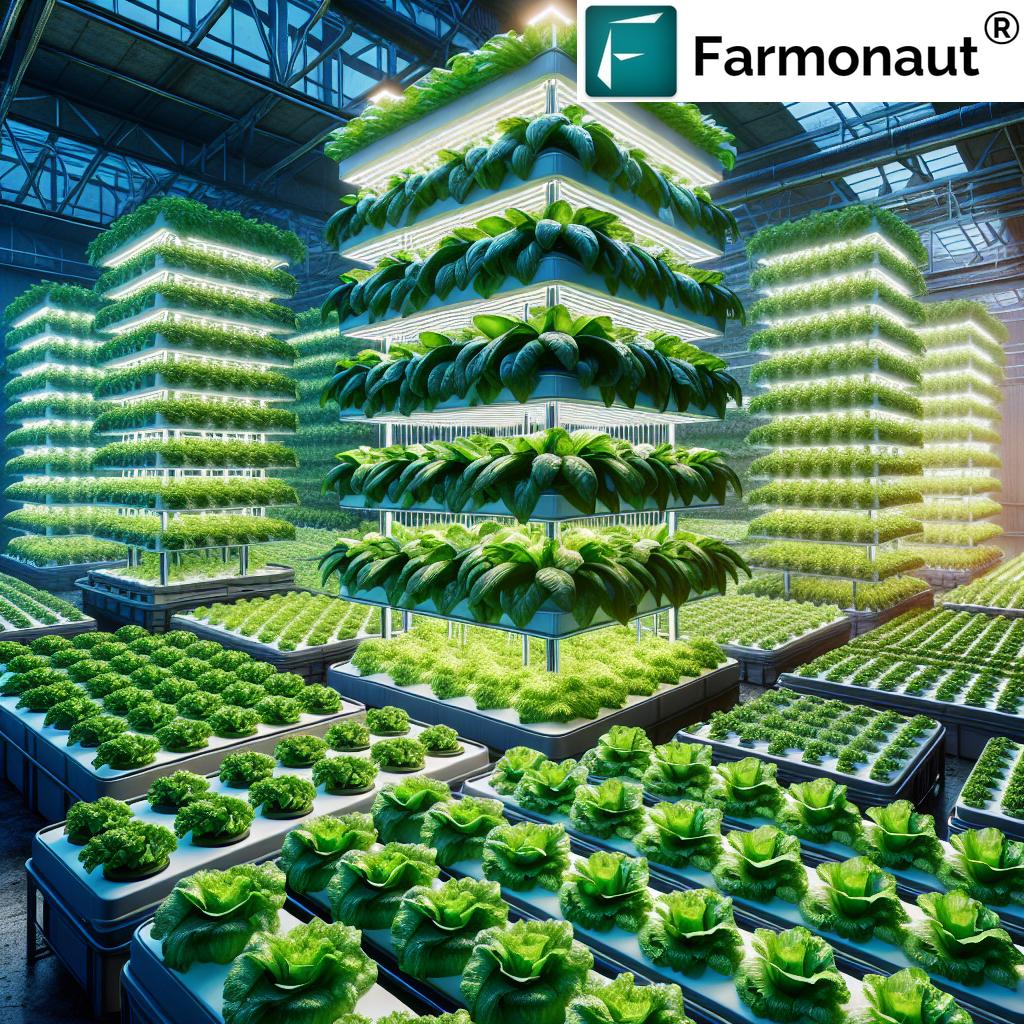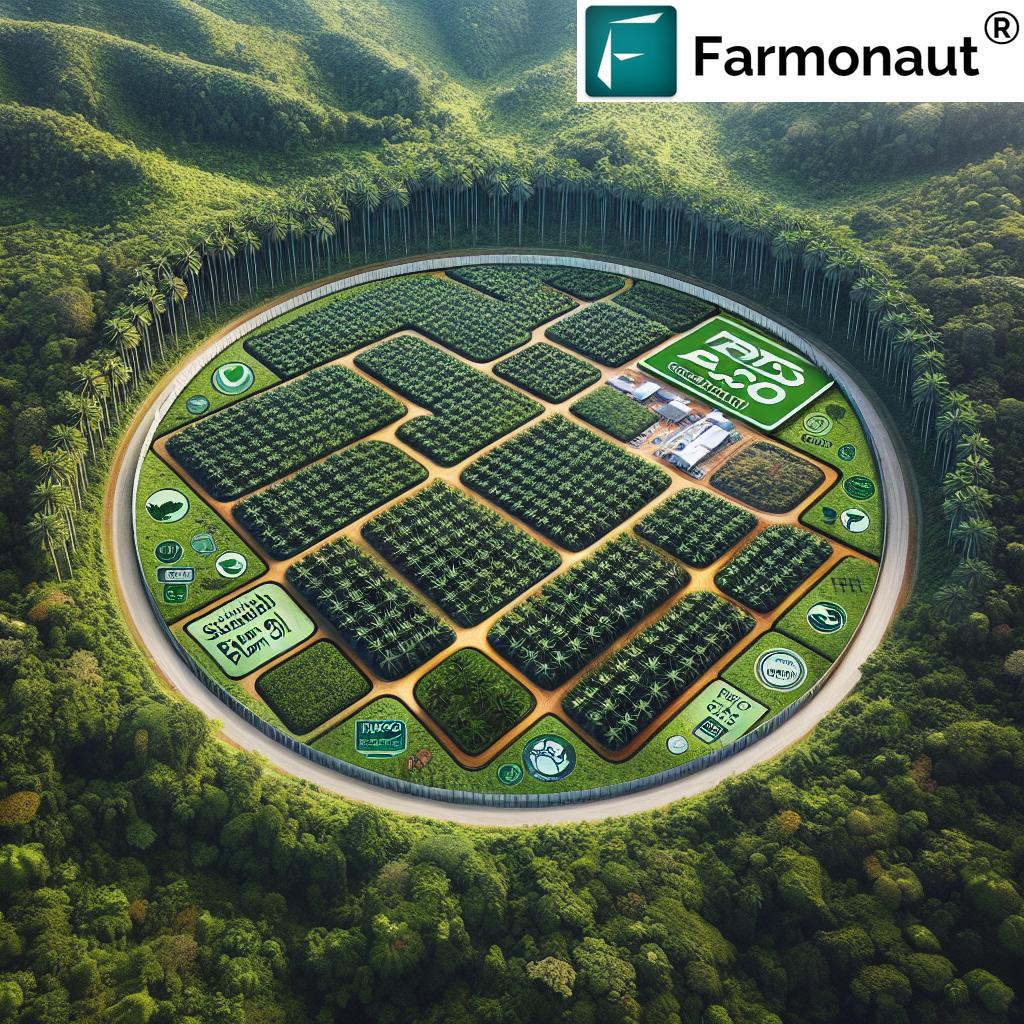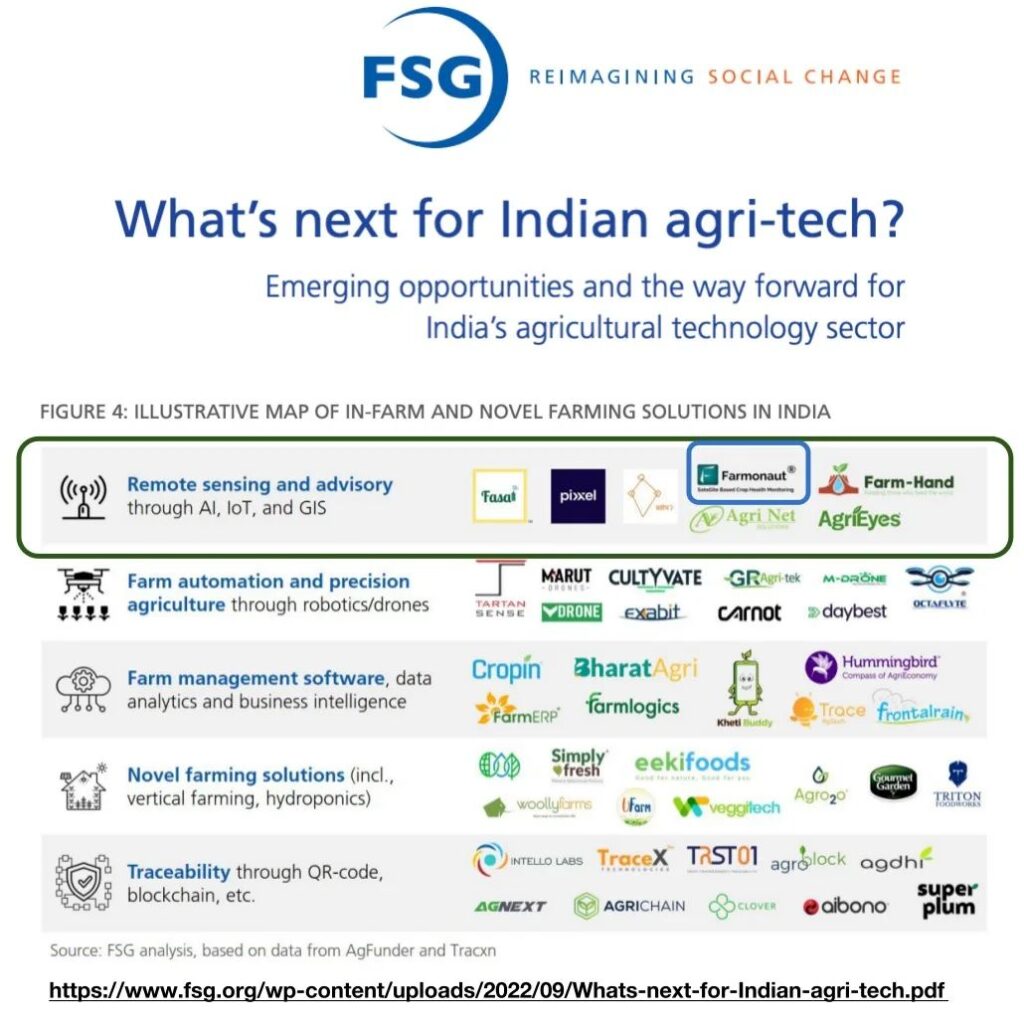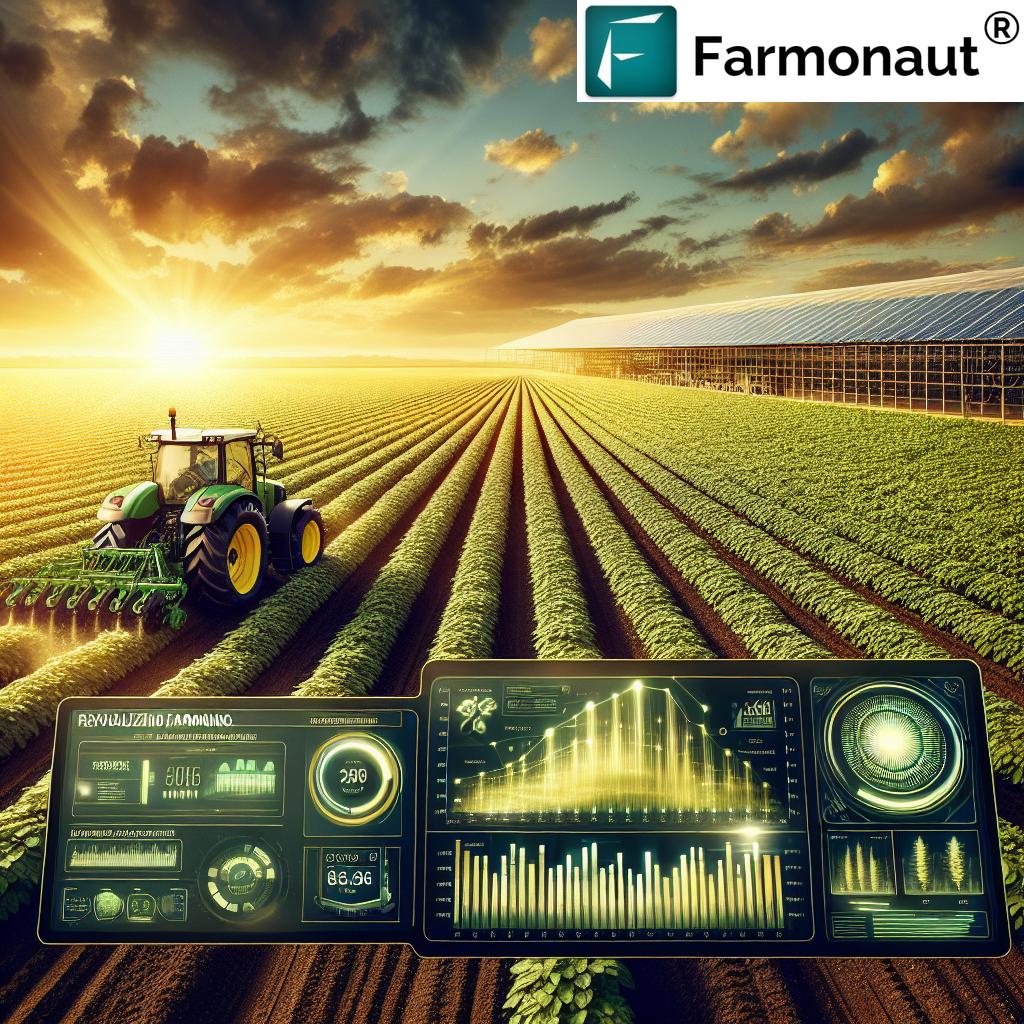Farmland Market Trends 2025: Powerful Shifts in Agriculture
Table of Contents
- Introduction: The Shifting Farmland Market Trends in 2025
- Rising Demand and Farmland Market Value Dynamics
- Comparative Trends Summary Table: Farmland Market 2025
- Investment Influx and the Role of Institutional Investors
- Technological Integration and Precision Agriculture Evolution
- How Farmonaut Advances Technological Change
- Climate Change and Sustainability Imperatives in Farmland Markets
- Embedded Video: Regenerative Agriculture & Carbon Farming 2025
- Policy, Regulation & Global Trade Impacts on Trends in Farming
- Localization of Farmland Trends Across Key Regions
- Satellite-Based Insights, AI & Blockchain: The Next Generation of Agricultural Market Trends
- Opportunities, Risks, and Strategic Navigation for Stakeholders
- Farmonaut: Tools & Resources for the Farmlands Market
- FAQ: Farmland Market Trends 2025 & Beyond
- Conclusion & Outlook for 2025 and Beyond
Introduction: The Shifting Farmland Market Trends in 2025
As we move further into 2025, the farmland market trends are undergoing a powerful transformation. The agriculture market is being shaped by rapid technological innovation, rising demand, shifting global trade flows, and increasing sustainability imperatives. Not only are agriculture market trends in flux, but the entire landscape of farming—from North America, South America, and Asia to fast-evolving parts of Europe and Africa—is experiencing significant change. For investors, policy-makers, and farmers alike, understanding these volatile dynamics is crucial to navigating both opportunities and risks that will define the next decade.
By unpacking the key trends—from demographic pressure, surging demand, and high-value lands, to ongoing integration of digital technology and regulatory policy shifts—this blog provides a comprehensive map of what lies ahead for the market. With expert analysis and embedded resources, it serves as a vital tool for all agricultural stakeholders.
Rising Demand and Farmland Market Value Dynamics
One of the most significant trends in farmland market trends as we enter 2025 is the sharp rise in global demand for food. The population is expected to surpass 8 billion soon, intensifying the need for productive land and driving competitive market positioning across all regions.
- Changing dietary preferences—such as the growing rise of plant-based and organic foods—are creating new demand profiles for farmland.
- These drivers combine to make agriculture market trends in 2025 more dynamic and complex than ever before.
- Regions like North America, South America, and Asia have witnessed a steady appreciation in farmland values, buoyed by investor confidence and market speculation.
- However, the trend is not uniform: in Europe, for instance, regulatory constraints and urban expansion have created tempered growth in price and new market challenges.
Farmland is increasingly seen as a stable asset—one that is inflation-hedged and offers tangible security against economic shocks. This is driving institutional and agribusiness investment in the market, fueling both opportunity and new challenges—especially for smallholder farmers and rural communities.
Comparative Trends Summary Table: Farmland Market 2025
| Region/Country | Estimated Avg. Farmland Price (2025, per hectare) | Main Trend Driver | Projected YoY Price Change (%) | Note/Insight |
|---|---|---|---|---|
| North America (USA, Canada) | $14,500 | Technology & Institutional Investment | +7.2% | High adoption of precision agriculture, rural expansion |
| South America (Brazil, Argentina) | $7,300 | Trade Policy & Crop Exports | +8.1% | Rising global demand for soy and corn, biofuel expansion |
| Asia (India, China, Southeast Asia) | $9,100 | Urban Expansion & Tech Adoption | +9.8% | Growing pressure from urbanization, tech-driven yield boosts |
| Europe (France, Germany, UK) | $18,800 | Regulatory Policy & Sustainability | +3.4% | Stringent constraints on land usage, climate compliance |
| Australia & New Zealand | $12,700 | Export Markets & Water Scarcity | +5.7% | High-value exports, severe environmental challenges |
| MENA (Middle East & North Africa) | $5,900 | Water Tech & Food Security Initiatives | +4.1% | Government-driven agtech investments, desert farming |
| Africa (Sub-Saharan) | $3,600 | Investment & Agricultural Development | +6.4% | Focus on smallholder inclusion, satellite market entry |
Table values are estimates for 2025, emphasizing regional differences and drivers influencing farmland market trends and prices.
Investment Influx and the Role of Institutional Investors
A notable trend shaping agriculture market trends is the growing interest from institutional investors, funds, and large agribusinesses. Farmland is now considered a core asset for stable, inflation-hedged investment portfolios. What does this mean for markets across 2025 and beyond?
- Intensified capital influx—Large-scale institutional capital is flowing into productive farmland, especially in North America, South America, and rapidly industrializing parts of Asia.
- Pushing prices upward—This capital is driving farmland prices higher and reflects strong confidence in agricultural profitability.
- Uneven benefits for stakeholders—While these trends benefit commercial farming operations, they create affordability challenges for smallholder and family farmers, potentially affecting rural socio-economic fabric.
- Emergence of new lending models—Tools like satellite-driven crop loan and insurance verification are crucial for making capital and insurance more accessible to smaller operators by reducing fraud and improving transparency.
The growing institutional footprint in the farmlands market is altering market dynamics and changing the way agricultural value is measured, further diversifying investment opportunities as we progress through 2025.
Technological Integration and Precision Agriculture Evolution
A revolution in digital technologies is profoundly influencing farmland market trends, from crop management on individual plots to big data analyses driving global markets. The era of precision agriculture is here, and adoption rates in 2025 are record high.
Key Tech Innovations Transforming Farmland Markets
- Precision agriculture tools—including drones, real-time soil sensors, surveillance platforms, and AI-driven analytics—are optimizing input usage (e.g., water, fertilizer), improving yields, and minimizing environmental footprints.
- Blockchain technology—ensures transparency and traceability from farm to table, building trust in global agricultural supply chains. Learn how blockchain-based traceability is transforming agri logistics.
- AI & advanced analytics—Big data and machine learning interpret massive data streams from satellites and in-field sensors, offering predictive insights on yields, disease, and climate risk.
Tracts of farmland equipped with advanced technology enjoy higher productivity potential and better sustainability profiles, making them highly attractive to investors and agribusiness operators in 2025.
Increased Tech Adoption: A Key Indicator of Farmland Value
- Farmland with integrated IoT, automation, automated irrigation, and analytics systems now commands premium prices.
- Digital platforms like those offered by Farmonaut (large-scale farm management solutions) are essential for maximizing resource use and operational efficiency.
How Farmonaut Advances Technological Change in Agriculture Market Trends 2025
We at Farmonaut play a crucial role in revolutionizing farmland market trends through our satellite-based monitoring, AI-driven advisory systems, and blockchain technology. Our mission is to make advanced agricultural innovation affordable and accessible by providing real-time crop monitoring, carbon footprinting, supply chain traceability, and productivity insights to all agricultural stakeholders globally.
- Real-time monitoring: Harnessing multispectral satellite imagery, we deliver detailed analyses on vegetation health (NDVI), soil moisture, and crop stress—empowering farmers and businesses to make informed decisions.
- Jeevn AI advisory: Our advanced AI delivers personalized, microclimate-informed strategies for boosting yield and asset value, helping farmers, agribusinesses, and governments stay ahead of environmental and market risks.
-
Blockchain-based traceability: Our platforms provide end-to-end traceability, enabling transparency for buyers, investors, and regulators—vital for certified organic and premium agriculture markets.
Discover more: Farmonaut Product Traceability - Environmental impact and carbon footprinting: With our carbon footprinting tools, farms and businesses can monitor and reduce emissions, benefiting from emerging carbon credit markets and new government subsidies.
This combination of advanced monitoring and predictive analytics helps drive sustainable production, boosts trust in supply chains, and ensures regulatory compliance—essential factors affecting farmland values and markets across 2025.
Climate Change and Sustainability Imperatives in Farmland Markets
Ongoing climate volatility—with more frequent droughts, floods, and heatwaves—is one of the most critical challenges affecting agriculture market trends 2025. Farmland regions that demonstrate climate resilience and embrace sustainable practices become especially attractive to future-focused investors as the decade unfolds.
- Adoption of climate-smart practices: Regenerative farming, diversified crop rotations, integrated pest management, and water-efficient irrigation stand out as trend drivers—both for yield resilience and policy compliance.
-
Subsidies & carbon markets: Governments are boosting subsidies and developing carbon credit incentives linked to sustainable farming, further supporting value appreciation for compliant farmland.
Farmonaut offers real-time environmental impact monitoring that helps agricultural businesses measure, manage, and improve their sustainability credentials. - Traceability and audit transparency: Buyers—from food manufacturers to asset managers—now demand supply chain integrity and verifiable low-carbon credentials. To respond, scalable technologies connecting production practices to downstream compliance are essential.
Climate-aligned agriculture market trends suggest that environmental management is not only a regulatory requirement; it’s now critical to brand value, land prices, and long-term market stability. Whether in Europe, America, or emerging Asian and African markets, sustainability is a new baseline metric for investor confidence.
Policy, Regulation & Global Trade Impacts on Trends in Farming
Policy direction and trade regulation remain highly influential on agriculture and farmland market trends in 2025. Both regional and national policies affect everything from commodity crop selection to land use and price trajectories.
- Geopolitical factors: Evolving trade agreements, export-import restrictions, and growing protectionism determine market access for major crops like soy, corn, and wheat. In South America in particular, global biofuel demand is elevating the value of agricultural exports.
- Regulatory tightening: Advanced regions—especially the EU—continue to strengthen regulations around land use, pesticide application, and water use. Compliance-ready farmland is thus more valuable and resilient against future regulatory shocks.
- Growth in compliance tools: Reliable, satellite-based verification (see our traceability solutions) supports rural stakeholders and regulators to monitor and enforce sustainable land use at scale.
- Emerging subsidies and incentives: Increased government support for climate-aligned agriculture further boosts certain markets and influences long-term conduct.
Localization of Farmland Trends Across Key Regions
Americas: North and South America Lead in Technological Innovation
-
North America dominates in precision technology adoption. Nearly 80% of commercial farms in the U.S. and Canada utilize satellite-aided soil monitoring and automated irrigation.
Farmonaut’s tools for large-scale farm management optimize use of these innovations. - South America benefits from surging trade in soy, corn, and biofuels, raising both land value and competition for productive tracts.
Asia: Balancing Urbanization and Farming Expansion
- Countries such as India and China have a dual challenge: rapid urban expansion is eating into productive farmland, but the adoption of AI and digital agriculture is helping optimize remaining acreage.
- Precision farming and resource management APIs (Farmonaut API) are helping farmers and businesses scale food production to meet the needs of billions.
Europe: Policy-Driven Sustainability
- Europe continues to set benchmarks for sustainability and regulatory compliance, and price growth is more measured. Environmental compliance and carbon tracking are dominant value drivers.
- Tech-enabled monitoring and carbon reporting solutions like those from Farmonaut facilitate compliance with evolving EU policies.
MENA and Africa: New Frontiers in Farmland Market Trends
- MENA: Water scarcity and food security challenges drive agtech investment and the rise of desert farming.
- Africa: Emerging as a frontier market for investment, with satellite technology (advisory and monitoring apps) helping bridge productivity gaps.
Satellite-Based Insights, AI & Blockchain: The Next Generation of Agricultural Market Trends
The 2025 farmlands market is defined by integration: combining real-time data from satellites, field sensors, AI algorithms, and transparent blockchain records. These interconnected platforms amplify both the precision and reliability of agricultural decision-making.
-
Satellite crop health monitoring—enables precise targeting of fertilizer, water, and pest control, reducing waste and cost.
Learn about Farmonaut’s solutions for large-scale farm management. - AI-Driven Advisory: Decision support tools forecast disease outbreaks, drought risk, and market trends—helping stakeholders optimize both output and long-term value.
- Blockchain Traceability: Growing market demand for transparent, traceable supply chains requires secure, blockchain-backed records for every stage of the farm-to-fork journey.
- API-Enabled Scalability: Flexible, developer-ready APIs (API developer docs) make it easier for businesses to integrate precision ag tools into existing systems.
Opportunities, Risks, and Strategic Navigation for Stakeholders
Opportunities Emerging in Agriculture Market Trends 2025
- AgriTech-Driven Growth: Widespread adoption of satellite, AI, and IoT platforms creates new efficiencies and opportunities for all sizes of farm operations.
- Carbon Markets: Farms with demonstrable carbon sequestration now qualify for additional revenue streams and better financing terms—benefits enhanced by tools like Farmonaut’s carbon monitoring platform.
- Resilient Investment Portfolios: Investors are increasingly diversifying with farmland exposure, benefiting from stable, inflation-hedged returns as market volatility continues globally.
- Policy-Driven Innovation: Governments incentivizing sustainable land use create a more regulated, transparent environment—rewarding adaptive, compliance-ready operations.
Risks and Challenges Affecting the Farmlands Market
- Affordability Barriers: Rapidly rising land prices may exclude smallholder farmers unless reforms, innovative financing, or tech-driven lending tools are adopted.
- Regulatory Complexity: Countries shifting policies or tightening compliance can create short-term volatility and longer-term adaptation costs for non-compliant stakeholders.
- Climate Extremes: Weather-related risks are difficult to fully hedge, underlining the need for dynamic monitoring and adaptive practices.
The path forward for farmland market trends in 2025 and beyond is defined by how well stakeholders harness technology, innovate under ambitious climate goals, and proactively manage regulatory and financial uncertainty across the global landscape.
Farmonaut: Tools & Resources for the Farmlands Market
We at Farmonaut are committed to providing modular, scalable solutions designed for everyone in the agriculture value chain—from smallholder farmers to large corporations and governments. Our digital platform delivers satellite-powered insights, real-time advisory, blockchain traceability, carbon monitoring, and resource management tools accessible through web, Android, or iOS apps and developer-friendly APIs.
Farmonaut helps farmers and agribusinesses unlock value by automating data-driven crop management, improving compliance, and maximizing yield—all in one platform. Our large-scale farm management system enables efficient monitoring of multiple land parcels, resource allocation, and environmental impact management.
Farmonaut Subscription Plans
Satellite-driven insights are now closer and more affordable than ever.
FAQ: Farmland Market Trends 2025 & Beyond
The top factors include rising global demand for food, rapid technology adoption (e.g., satellites, AI, blockchain), shifting policy and sustainability requirements, and the influx of institutional investment. Each factor affects regions differently, but together, they shape opportunity and risk across the market.
Technology (precision ag, drones, sensors, AI) enhances input efficiency and crop yields. Farmland equipped with advanced agtech commands higher prices and is more attractive to investors due to its sustainability profiles and resilience to climate and regulatory pressures.
Yes, rapidly rising land values can price out smallholder farmers. However, new access to satellite-based lending/insurance tools and government subsidies can help offset some of these pressures.
Climate-smart, regenerative agriculture can boost yield sustainability, unlock carbon credits, and comply with market and regulatory requirements. Technologies that measure and verify sustainability, like Farmonaut’s carbon footprinting platform, are valuable for accessing incentives.
Markets differ widely. For example, North America sees fast tech adoption and high investment, Europe emphasizes sustainability and regulatory policy, while Asia and Africa combine urban expansion with emerging tech. Understanding these dynamics is crucial before entering specific markets.
Traceability ensures reliable, transparent product origins, a major concern for buyers, policy-makers, and regulators as food fraud and sustainability claims rise globally. Blockchain-based solutions, like those from Farmonaut, build trust and compliance into every transaction.
Tools and API documentation are available via our Satellite API portal and developer resources.
Our large-scale farm management solutions enable satellite-powered monitoring, resource allocation, and reporting for enterprises and governments.
Conclusion & Outlook for 2025 and Beyond
To summarize, farmland market trends in 2025 reflect a confluence of demographic pressure, market innovation, regulatory changes, and sustainability imperatives. The winners in this evolving landscape are those who harness technological progress, embrace sustainable practices, and stay agile amid global market and policy shifts.
Smallholders and rural communities face challenges but can thrive through support, digitization, and advanced financing models. Institutional investors and large agribusinesses will continue to modernize markets, but the transformation is only sustainable when it empowers all segments of the value chain.
With our satellite-driven tools, carbon monitoring, and blockchain traceability, we at Farmonaut are committed to supporting the next era of productive, resilient, and transparent agricultural markets—enabling every stakeholder to navigate the opportunities that lie ahead.




